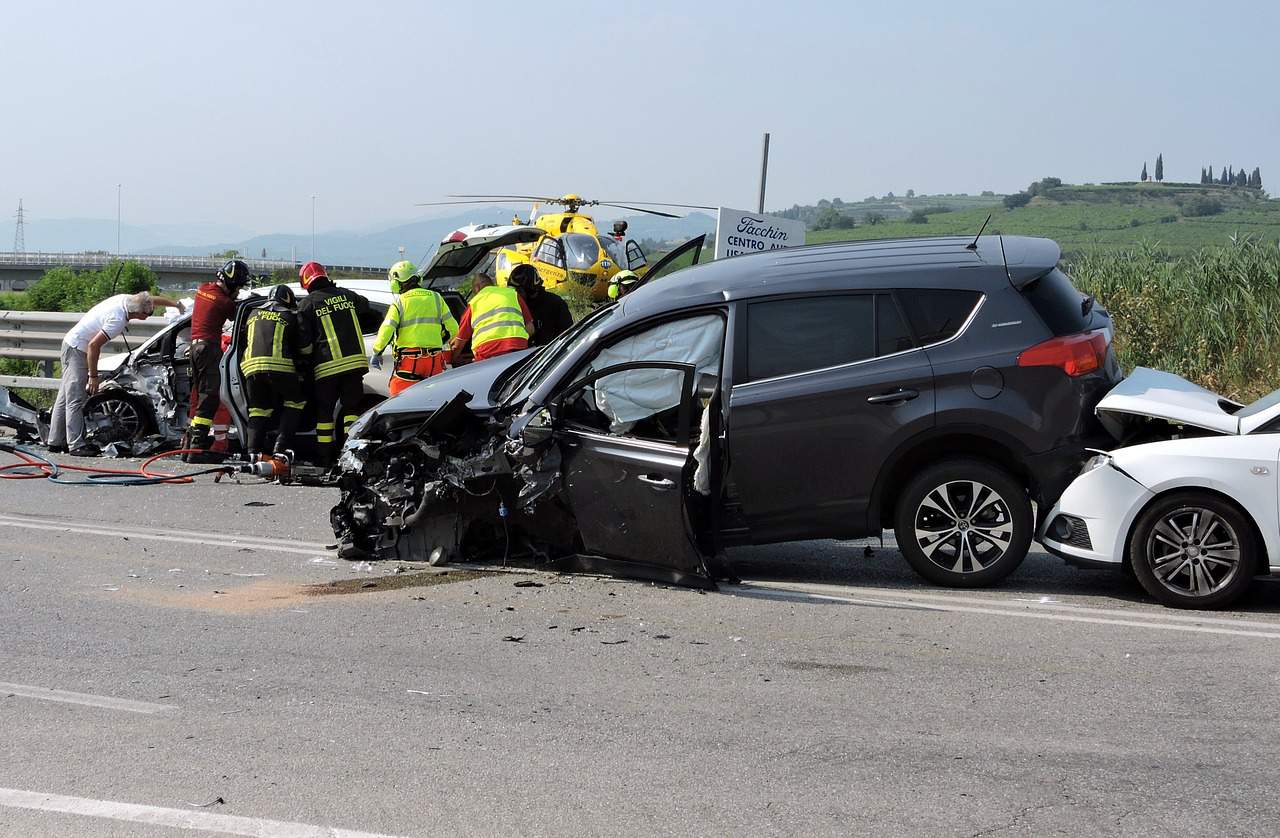If you learn about car wrecks, you’ll soon find out different ones exist. For instance, you might have a T-bone collision. A car hits another one broadside. Often, this happens if one car runs a red light and hits another one passing through an intersection.
You might also learn about head-to-head collisions. These usually happen with drunk drivers. Maybe a
driver enters a freeway by heading up a one-way exit ramp. A car leaving the highway hits them, potentially harming both drivers very severely.
In this article, though, we’ll discuss rear-end accidents, sometimes called fender benders. They’re not usually the most severe crashes, though some mitigating factors can make them worse.
What Usually Happens in These Accidents?
Back and neck injuries are frequent in rear-end car accidents. That makes sense when you consider the physics involved.
As a passenger or driver, you’re sitting and facing in one direction. A car comes up behind you and hits your vehicle’s rear bumper. The impact takes place behind you, so there’s a jolt that your neck and back feel. You’ll jerk forward sharply and then back again.
What Makes These Accidents Worse?
If you stop suddenly, that might cause a rear-end collision. Maybe something runs across the road. Perhaps it’s a child, or maybe it’s an animal. If you’re on the highway, you might slam on the brakes if a deer or some other large animal appears suddenly.
If that happens, someone driving behind you might not stop in time. They can hit your rear bumper, and hopefully, they’re not going very fast when they do.
You may also have a situation where you brake check someone. This term means you stop suddenly when there’s another driver tailgating you.
In these situations, some people feel you caused the accident because you hit the brakes abruptly. Others think the other driver caused the crash because they drove too closely behind you.
You might both share some responsibility. If you hit the brakes without any valid reason, you bear some blame. However, no driver should tailgate someone ahead of them. By doing so, they endanger themselves and those around them.
No matter why the motorist behind you hits your car, if they’re driving faster, that will probably hurt you more. Whether you’re driving or in the passenger’s seat, another vehicle hitting your rear bumper sharply can cause a more serious back or neck injury, or sometimes both.
Slower drivers hitting your rear bumper likely won’t cause serious harm. Your car won’t suffer very much damage, and you might only have a slight neck or backache that goes away in a day or two.
What About Passengers Who Aren’t in the Front Seat?
If you’re riding in a car and you’re in the back seat, you can also injure yourself if a vehicle hits you from behind. Let’s say you have four people in a car.
There’s the driver, someone else in the front seat, and two people riding behind. You might all sustain neck and back injuries if a car hits you sharply. You might all walk away with sore necks and backs or possibly more serious and lasting injuries.
What Can You Do Following These Accidents?
Following rear-end collisions, you must consider the next logical steps. After calling emergency services and telling the cops what happened, you must think about who caused the accident.
If you feel sure the other driver did, you can tell your car insurance company that when you report the crash later that day. You might also simply reveal the facts and let them decide who caused it.
In any event, you should visit a hospital after the crash. If you feel sharp neck or back pain right after the accident, you should see a doctor without delay. You might have a neck or back sprain or something similar.
You might have whiplash. That’s a painful condition, even the milder versions. Severe whiplash cases might hurt you and cause discomfort for months after the wreck.
In the worst cases, you might have a broken neck or back. If that happens, it’s likely the car behind you struck you going extremely fast. If that occurs, you can feel certain the other driver lost control or that something distracted them.
How Can You Treat These Injuries?
In the aftermath, you must determine the proper treatment. You and your doctor can talk about that.
They might suggest you wear a neck brace. They may say you can’t work for a time. Perhaps they say you can work, but you should do so from home. If you have a job that allows at-home work, you might do that for a while.
You may need some prescription pain meds in severe cases. A doctor might give you those, but they may refuse. These days, doctors won’t usually give you opioids because they carry such a high addiction risk. They might give you some extra-strength Tylenol or something like that.
They may say you need some downtime before you can do much of anything. You might feel bored and frustrated during this period. If you have serious neck or back injuries, though, you must remain patient and let your body heal.
You Can Usually Resume Your Normal Life Eventually
The human body shows great resiliency in many instances. Even if you must stay off your feet for weeks or months with back and neck pain, you will usually recover. You might not like that downtime, but if your body needs it, you have little choice.
If you sustain injuries that never completely heal, then maybe you can sue the other driver. If they obviously broke some traffic laws, you can hire a skilled car crash lawyer and go after the other driver in court.
The money you’ll win won’t heal you, but you can at least feel you got some recompense. You might use that cash if you can’t resume your old job after the accident.

